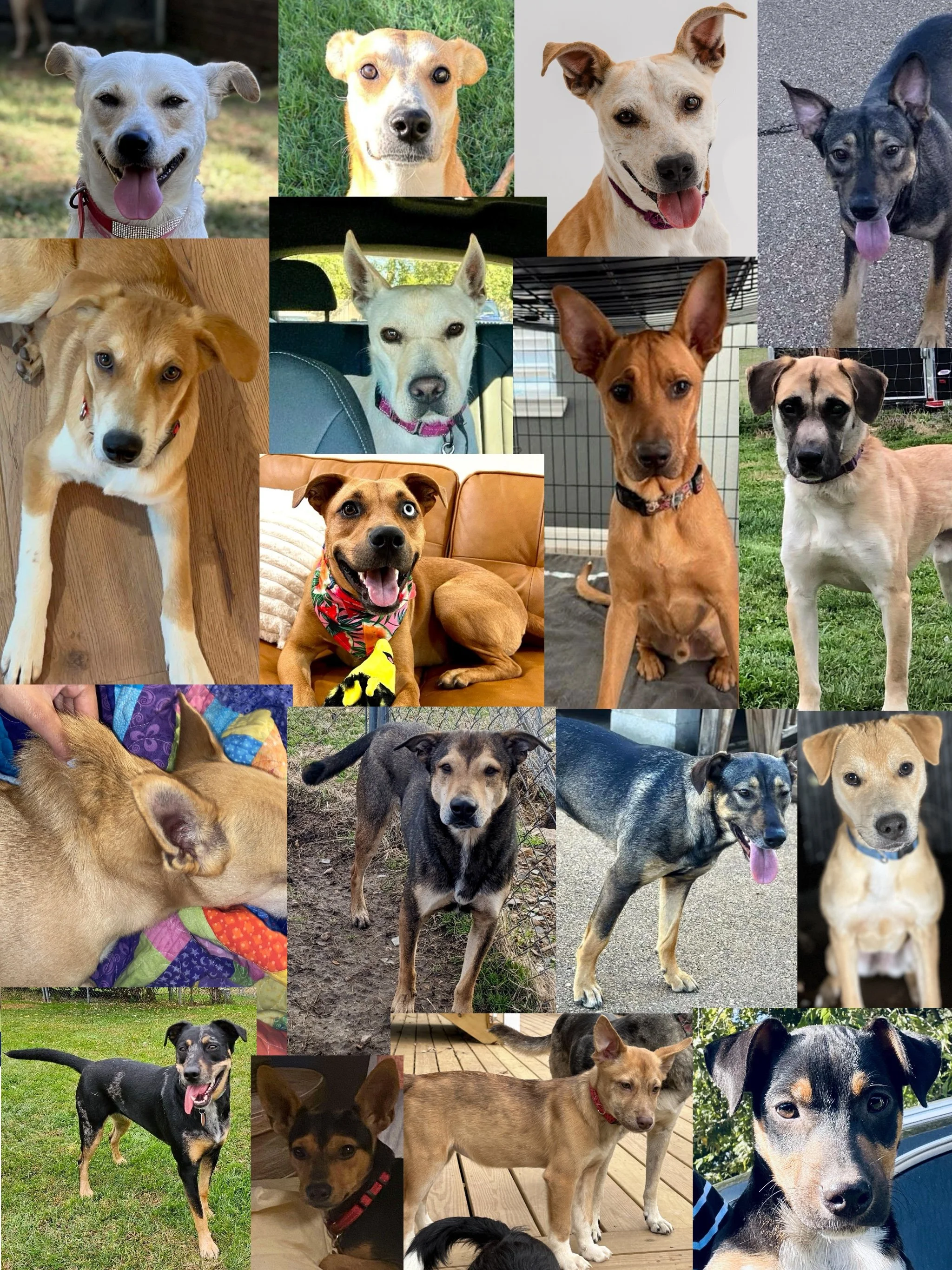If you have a rescue dog, there’s a 90% chance it’s a North American Pariah dog.
Well, maybe not 90%. But pretty darn close.
Due to the pretty good animal welfare laws here in the North (and the cold climate), there are very few strays and street dogs in New England. Comparatively to the Southeast US, Southwest, and Texas, there are thousands upon thousands of stray and street dogs that crowd shelters and do not get to benefit from some of the lawful protections we have up North. If you’ve decided to adopt from a shelter, it’s pretty likely the rescue you went through has partnerships in southern states in order to ship some of the dogs up here.
Any of these look familiar?
How about any of these dogs?
Ever heard something like this?
“His behavior changed out of nowhere!”
“There was no warning!”
“Sometimes, I don’t understand anything my dog does.”
Honestly, I would be a little confused if these things don’t look familiar to you. These are all rescues from the south, with pictures pulled from individual rescue organizations.
My background is in research, especially that of ancient dogs — pattern recognition within different sources is a skill I take pride in. After observing southern rescues, training them, and breaking down their physical structure, I have a few thoughts.
Why is all this important?
Street dogs all over the world have very similar behaviors, habits, and triggers. This is important to know because street dogs are also distinctly different than pet dogs. Here are a few definitions for you:
Pet dog: dogs that live with a human family, either purebred or mix, with or without other dogs. These dogs exist purely for the sake of being family members and do not have a day-to-day “job”.
Working dog: think service dogs, K9 and military, and detection dogs. These are usually Labrador or Golden Retrievers, German Shepherds, or Belgian Malinois, but are by no means restricted to those. More importantly, they have a day-to-day job just like you or I, and come home with their handlers to rest and be a pet on their “off” time.
Landrace dog: is usually a term people have not heard before. Landraces are animals or plants native to one place, or a diverse population with similar characteristics — think of native varieties of squash and beans in terms of plants, and Carolina Dogs for an animal landrace. (There is more info on Carolina Dogs in the Primitive Dogs page).
Primitive dog: primitive dogs all have similar behaviors and habits to wild canids like wolves and coyotes. They have sometimes evolved with very little human intervention, and sometimes with very intentional human intervention. Because of their “wild” nature, they are typically very wary of strangers and very connected to either one person or one family. They do not typically handle change very well.
Street dog: or community dogs are strays that exist without a human hand in their lives. Community dogs often live mostly off of human-provided food and water, but not shelter; street dogs gain their resources on their own. They are also typically wary of humans and avoid frequent contact.
-
It all begins with an idea. Maybe you want to launch a business. Maybe you want to turn a hobby into something more.
-
It all begins with an idea. Maybe you want to launch a business. Maybe you want to turn a hobby into something more.
-
It all begins with an idea. Maybe you want to launch a business. Maybe you want to turn a hobby into something more.






